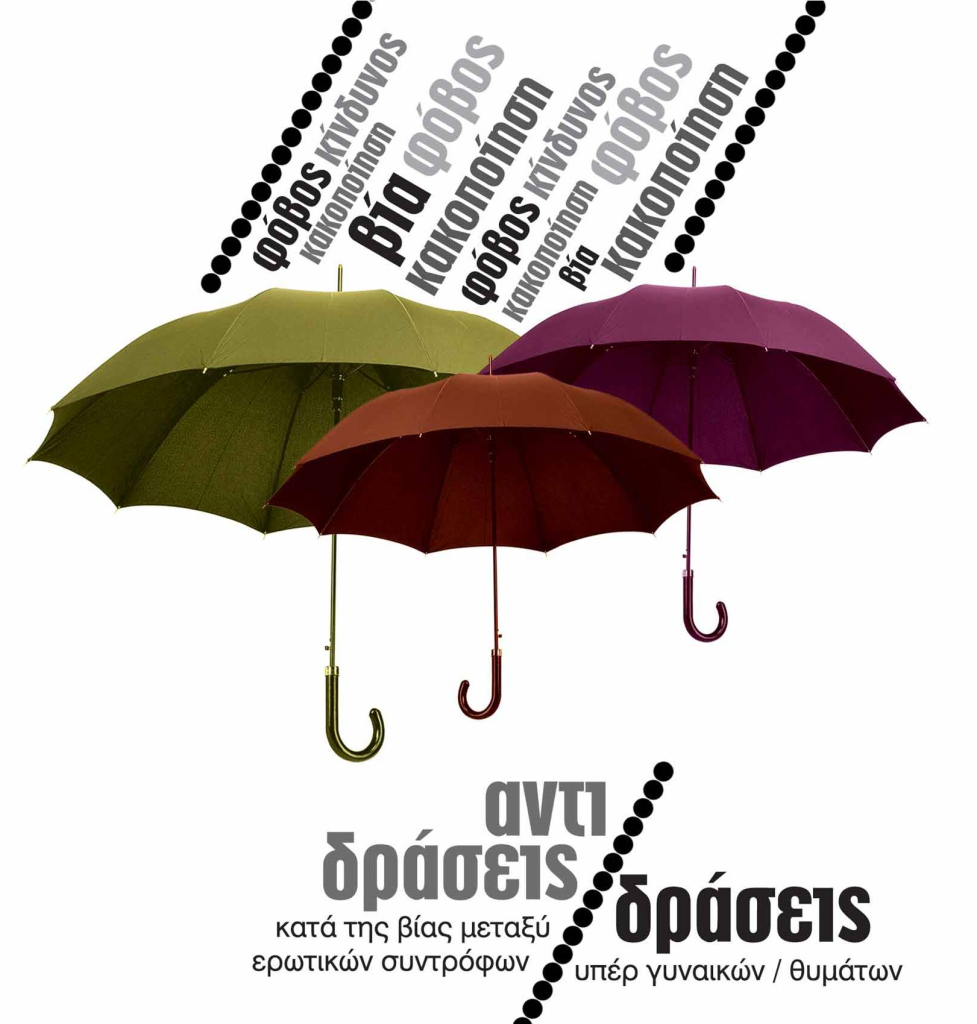European Anti-Violence Network implemented the Project entitled
“Re-Actions against Intimate Partner Violence (IPV) – Actions in favor of women-survivors of IPV”
with co-financing by the European Social Fund in the framework of the category of action 3.2.4: “Support to Women’s Organisations and Non-Governmental Organisations” of the NSRF 2007-2013, OP Public Administration Reform (Implementation Body: General Secretariat for Gender Equality).
Objectives of the project were to contribute to primary, secondary and tertiary prevention of Intimate Partner Violence (IPV) via targeted:
- provision of information and support to women-survivors of IPV via:
- the publication of the book Guide on “How to Escape” from a Violent Relationship
- operation of an Information Centre for IPV issues
- Training of health and social care professionals (distance learning) on IPV related issues (e.g. screening, danger assessment, safety planning and documentation of IPV). For the training seminars it was developed the educational material that also included ready-to-use tools. The training seminars were conducted from March 2013 – April 2014.
Informational Leaflet (in Greek)

Guide of Organizations providing Services to Women Survivors of IPV (in Greek)

Guide on “How to Escape” from a Violent Relationship

The Guide on “How to Escape” from a Violent Relationship, informs every woman that is being abused by her partner or husband (but also any other interested person), about what she can do, where to turn for help and what services can be provided to her by the health – social care, judicial and public order system of Greece. It describes, in a simple way, the legislative framework, the existing organizations/agencies where she can ask for services of documentation, protection, support and/or therapeutic services (for herself and her children), but also the “steps” that she should follow.
The first chapters of the Guide introduce readers to the phenomenon of Intimate Partner Violence and describe the living conditions, thoughts, feelings and difficulties that women survivors of violence are facing, the consequences of abuse, warning signs and myths that -unfortunately even today- surround the issue of women’s abuse by their intimate partner.
The Guide is mostly written in the first person, using the voice of every woman that the storyteller met through her own journey, in order to describe the steps that she firstly had to find and then to follow in order to escape from her violent relationship.


